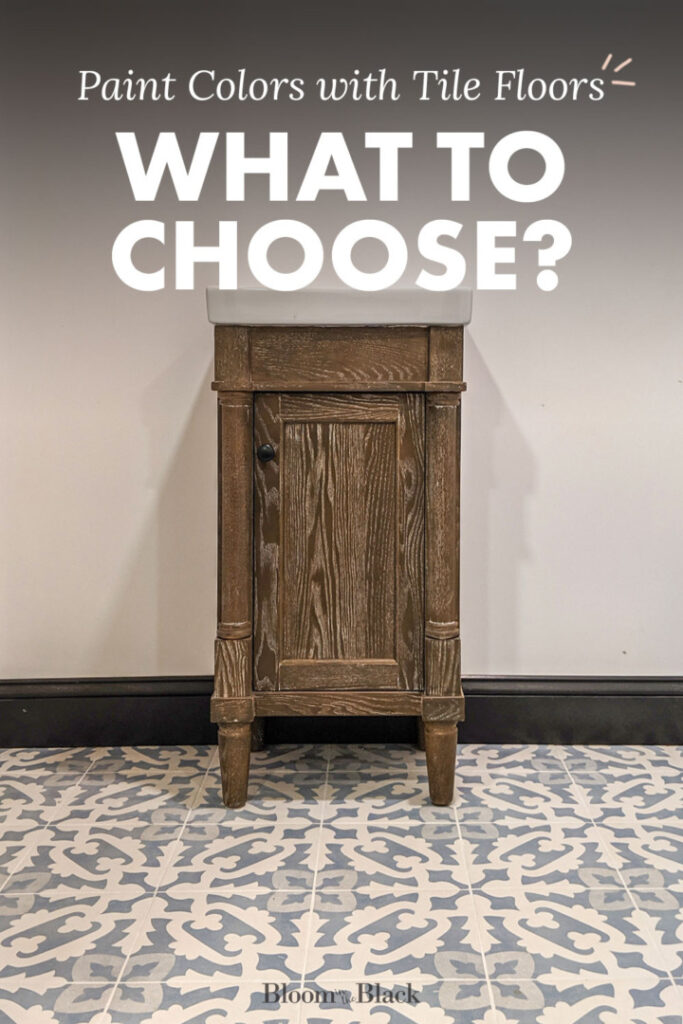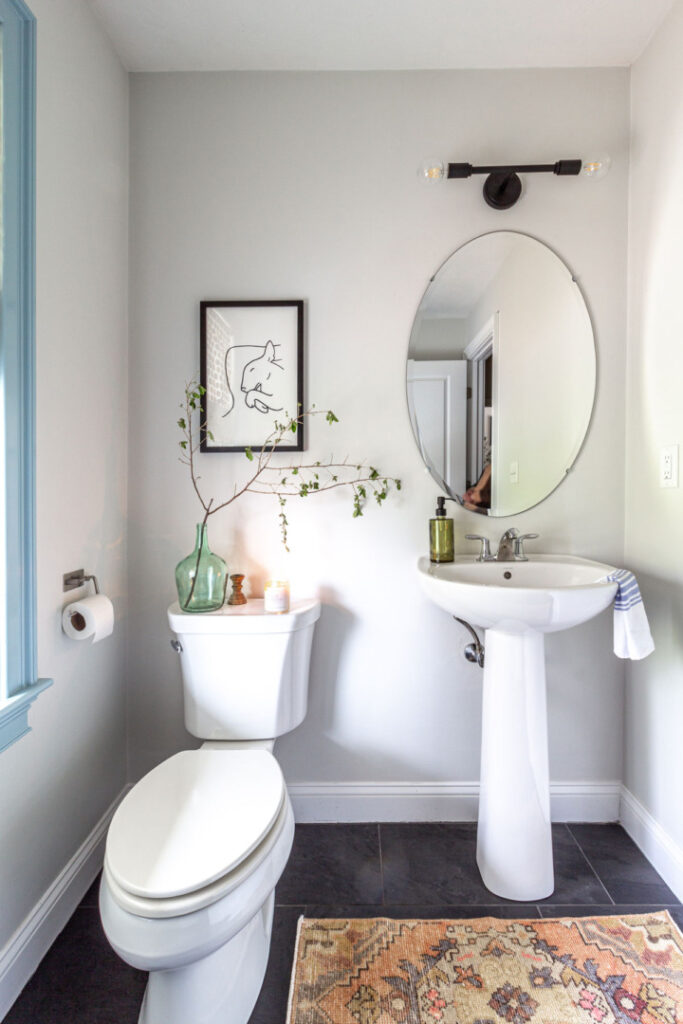Should Your Wall Paint Match Your Floor Tile Color? Expert Tips.
Trying to design your home and give each space its own unique vibe can be a bit tricky, right? I mean, you don’t want each room to look exactly the same. That’s where choosing the right colors for your walls and floors comes in. They can totally make or break the look and feel of a room. So, how do you go about picking the perfect color schemes to achieve your goals? Let’s chat about it!
No, your wall paint doesn’t have to match your floor tile color exactly but it must coordinate with it for a polished look. These elements need to be considered as one part of the overall color scheme of a room. The key is to make the design cohesive and appealing by choosing furniture, textiles, and decor pieces that tie the two colors together.
Let’s dive into why picking the right colors for your walls and floors is so important when it comes to designing a space that truly speaks to your style and meets your needs. In this article, we’ll cover some key factors you should consider, like the size and location of the room, to help you make the best color choices possible. And hey, I’ll even throw in some basic color scheme ideas to get your creative juices flowing. Ready? Let’s get started!
Pin for later!

This post contains some affiliate links for your convenience. Click here to read my full disclosure policy. Thanks for supporting Bloom in the Black!
Tips for Choosing Your Floor Tile and Wall Paint Color
Selecting a floor tile color to match your wall paint color (or vice-versa) can be pretty challenging. With so many exciting and beautiful shades and patterns to choose from, it’s easy to get lost in all the possibilities and lose track of what your objectives are in the first place. That is why it is crucial to set your goals (and stick to them) right off the bat.
Your chosen color palette is pivotal to achieving the look and feel you want for a room. Here are some tips to help you:
Work From the Bottom Up
Before you go wild and start picking colors based solely on their visual appeal, let’s take a step back and remember that your color scheme should work together to create the overall vibe you’re going for. Each color you choose needs to be just the right tone to help you achieve your design goals. So let’s keep that in mind and make sure we’re picking colors that will contribute to creating the space of our dreams!
Experts suggest focusing first on the floor before deciding on everything else.
(It’s much easier to repaint a room than to retile one!)
This will help establish a base from which you can draw up the rest of the room’s designs and tones. Some factors to consider when deciding on your floor tile color include the following:
- Room location. Is the room in a space that gets lots of sunlight, or is it in an area mostly shaded? As a general rule of thumb, well-lit rooms can go for darker tiles, while rooms that tend to be dim for most of the day will do well with mid-tone to lighter shades. However, if you are after a moody space, a dim room can use dark tiles beautifully!
- Room size. Typically, smaller rooms do well with lighter tile colors (to create the illusion of space), while larger rooms benefit from darker shades (to help make the room feel cozier). If you like small and cozy, you can still use a darker tile in a tiny room.
- Room fixtures. If you’ve already invested in some fixtures for the space, keep in mind that they have to match the tiles and the color scheme of the rest of the room, too.
- Room function. Will the room be used mainly for lounging and entertainment, or will it be utilized as a workspace? Keeping the room’s purpose in mind will help you decide on the right tile color and texture. For example, playful colors and designs will do well with a space wherein the whole family intends to spend a lot of time.
- Grouting. An often overlooked detail, grout can play a significant role in nicely tying together the selected colors for the walls and floors, making everything cohesive. Grouting is so powerful that even if you use different tile colors and textures but use the same grout color, the room will still look well put together.
Ask for tile samples before making your choice. This is a crucial step before making your final decision. Holding samples in your hands lets you see the colors and experience the textures firsthand. Take this opportunity to see how the tiles look under the room’s lighting.
Work on the Walls
Now that you’ve picked out the perfect floor tile color for your room, you can move on to choosing the best wall color to complement it. Remember that when designing a space, you should always start with the end in mind.
While it’s definitely important to stay true to your own tastes and style when picking colors for your space, it’s also a good idea to keep up with the latest color trends. Now, I’m not saying that you should base your whole color scheme on what’s popular right now, but being aware of current trends can help inspire some fresh and exciting ideas for your room. So let’s keep our eyes peeled for the latest and greatest in the world of color!
Here are some tips on how to choose the best wall paint to match your floor tile color:
Identify Colors
When it comes to design, colors are primarily divided into 2 categories — warm and cool colors. Generally, you can mix and match warm and cool colors, depending on how you want the room to look and feel.
Warm colors include:
- Yellow
- Red
- Orange
- Beige
- Tan
- Brown
- Gold
- Creamy neutrals
Cool colors include:
- Gray
- Slate
- Blue
- Deep Purple
- Dark Green
There is actually a third category called hybrid colors. This group includes shades of purple and green, depending on whether they are closer to the warm or cool colors in the color wheel. Some of the shades are quite interesting and eye-catching, and they can go nicely with your chosen color scheme.
You may be wondering where black and white stand concerning color categories. Scientifically speaking, colors are formed due to the reflection of light. Black and white aren’t actually colors because black results from the lack of light being reflected, while white is what you see when all the light reflections combine.
However, from a design perspective (and in the ubiquitous box of crayons), black and white are considered colors because they can evoke certain feelings and render a particular vibe to any space. That is why white can be regarded as cool while black is deemed warm.
Know How To Strike a Good Balance
Too many warm colors may make a room look drab and boring. On the other hand, using too many cool colors can make your space look cold or uninspired. For tips on creating a flawless color scheme, check out my article on the easiest way to choose a colors for your room.
A good color scheme lets you utilize specific colors as accents to draw the eye to a particular area in the room or to create contrast and make the space more intriguing. You can also use different shades and textures to add depth to the space, make it feel cozier, or achieve a chic, polished look.
Look at the Bigger Picture
Remember to take a step back and look at the bigger picture before making final decisions. Remember that your wall paint and floor tiles should complement each other so that the room looks seamless, appealing, and inviting. It should also be completely functional, depending on its intended purpose.
Color Scheme Ideas
You can use colors to make any room look aesthetically pleasing and to create the mood and vibe you want. Depending on your color choices, your floor and walls can create the ideal backdrop for achieving your design objectives.
Here are some basic color schemes to consider to help you get closer to your goals:
Light-Colored Walls + Light-Colored Floor
This scheme gives the illusion of space and helps make a room seem bigger than it actually is. It also helps make the space seem breezy and cool, especially if there are large windows through which sunlight and fresh air can freely enter.
Being surrounded by light colors can make a person feel more cheerful and energetic. Sometimes, they can evoke feelings of wanting to relax and enjoy. A light-colored room might be ideal for a family room, sitting room, or even a dining room.
Dark-Colored Walls + Light-Colored Floor
This color scheme is great for a room you want to create a dramatic vibe. Note that it may make the room seem smaller, but you’ll definitely get a moodier, more sophisticated look.
This color scheme will look great for a library, music room, or game room. Some people also prefer this color setup for a bedroom, especially if you like a cozier and more intimate vibe.
Light-Colored Walls + Dark-Colored Floor
A dark floor instantly makes a room feel chic and moody. The stark contrast created by the light walls will instantly slice through the darkness of the floor and give the room an airier vibe. The juxtaposition of colors makes an interesting and unique scheme.
Just stick to warm undertones if you’re dealing with warm-colored floor tiles and light undertones for light-colored tiles to make the contradiction more seamless. This scheme might work for bathrooms, utility rooms, or the kitchen.

Dark-Colored Walls + Dark-Colored Floor
Okay, okay, hear me out – I know dark on dark might sounds a little risky, but believe it or not, some people (me included) actually find it super calming. Plus, it can give a room a cozy vibe and make it feel very inviting. Sure, it might not be the best for light absorption, but depending on what you’re using the room for, it could be a total game-changer.
Dark walls with a dark floor might work for a man cave, media room, or den. This look is ideal if the space will be used primarily for gadgets and electronics, watching movies, or listening to music. The soulful vibe will undoubtedly make the experience more intense.
To give your place a cohesive and seamless look, you may want to know if other elements, such as stairs and floors should be the same material and color. Read my article to see if wooden stairs have to match floors.
Final Thoughts
Matching your wall paint to your floor tile is crucial to creating the look and vibe you want for your space. Take into account the room’s size, location, and function. Use this information as the basis for your design so that each space in your home will be appealing and functional.
Want more? Here’s the full collection of Bloom in the Black decorating posts. If you’re interested in having me cover a particular topic, shoot me an email and I’ll add it to the list!
